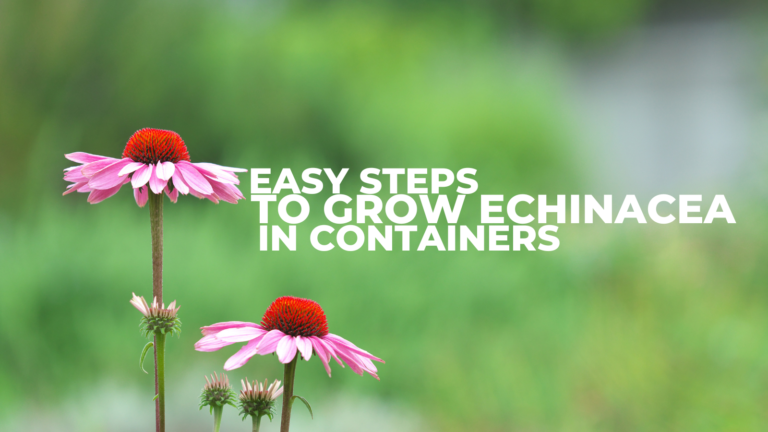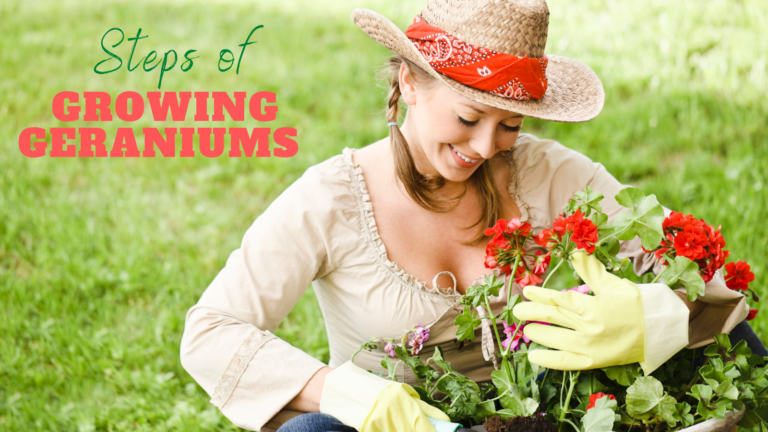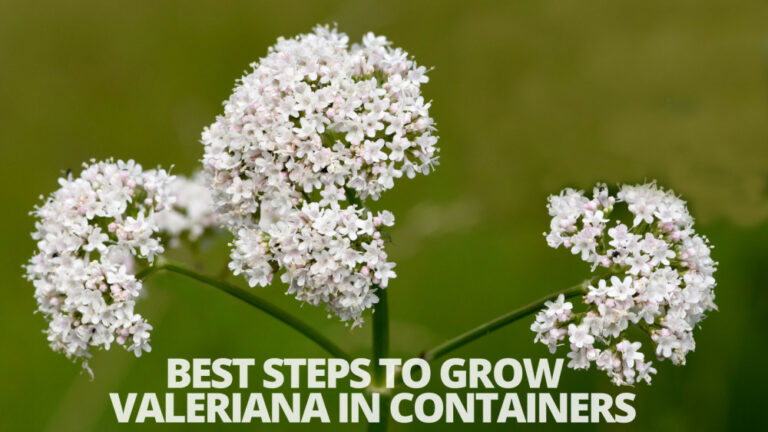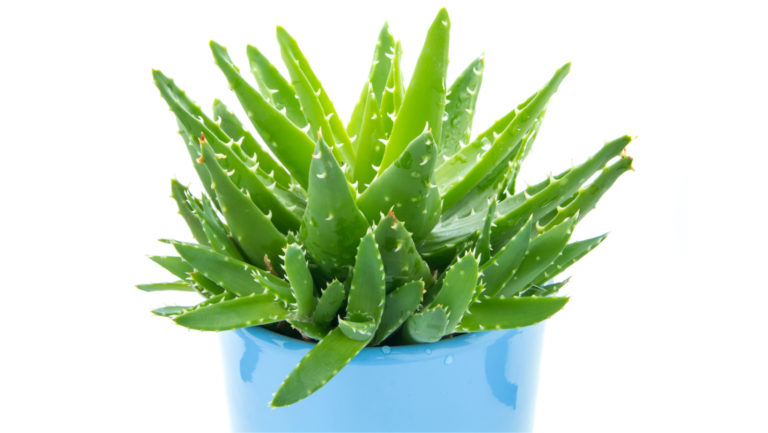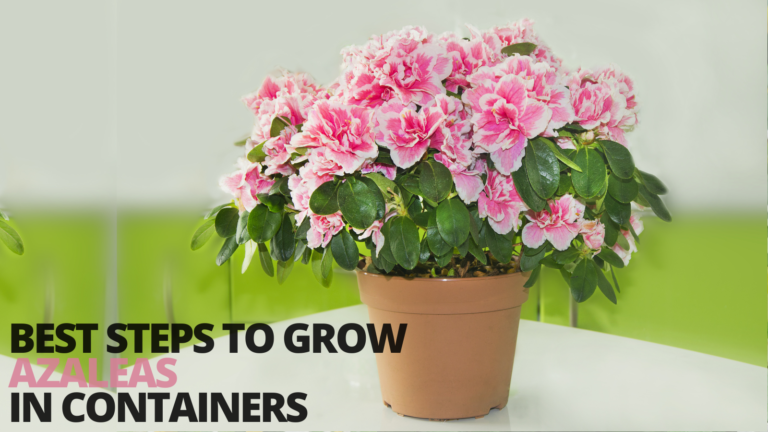Best Steps To Grow Chrysanthemums In Containers
Best Steps To Grow Chrysanthemums In Containers
Mums, commonly known as chrysanthemums, are trendy, and for a good reason. The plants continue to bloom well into the fall, and their containers appear for sale all over as the season progresses.
However, caring for container-grown mums can be a little challenging, and if left to their own devices, they can quickly go extinct.
But if you adhere to a few straightforward guidelines for caring for chrysanthemum containers, you should be able to enjoy their flowers all through the fall and perhaps even into the following spring.
Learn more about how to grow chrysanthemums in containers by reading on.
History & Origin Of Chrysanthemums
As bright as the flowers themselves, the history of chrysanthemums is also vivid. The chrysanthemum was primarily utilized as a culinary herb when it was first grown millennia ago in China.
Its young branches and petals were used to make salads, while its blooms and leaves were used to make tea.
The flower was then adopted by the Japanese, who were so enamoured of it that they elevated it to royalty. The chrysanthemum appears on the Emperor's official seal and crest.
The Supreme Order of the Chrysanthemum is the highest decoration that can be bestowed upon a person in recognition of exceptional national service.
The Festival of Happiness, one of five traditional festivals, is celebrated on National Chrysanthemum Day in Japan.
In the 17th century, the chrysanthemum was introduced to European culture. The flower took on a very different significance in other European nations, where it became a representation of death and was used at funerals and burials.
Greek words chrysos, which means gold, and anthemon, which means flower, were used by a Swedish botanist to give the chrysanthemum its name. The etymology stems from its Asian ancestry.
Chrysanthemum is translated as “gold flower” in both Chinese and Japanese. The flower's symbolism does not traverse cultural boundaries, but its name does.
The chrysanthemum has been used to symbolize everything from life to death in cultures as far back as ancient Asia and contemporary America.
The chrysanthemum is still adored for its vibrant hues and late flowering time. In America, from August to November, chrysanthemums are frequently used in homecoming corsages and as decorations for porches and balconies.
How Can You Use Chrysanthemums In Your Home?
1. Bring In Chrysanthemum Shapes
Your kitchen is associated with nourishment and wealth in feng shui. This is where you prepare food for your family, and a good diet is essential to producing wealth and abundance worldwide.
You can incorporate the flower's symbolism into your kitchen by selecting plates and bowls with chrysanthemum-like shapes.
2. Arrangements Of Autumnal Flowers
Fresh flower arrangements are a lovely way to enhance your house's qi, or life force energy, and bring in more happiness.
When stuck energy needs to be released, we frequently advise bringing in fresh flowers. Chrysanthemums are a great choice in the autumn because of their association with seasonal symbolism, and using blooms in season is especially meaningful.
3. Imagery And Artwork
You can also look for wallpaper, artwork, and other decorative items that feature chrysanthemum images.
Look for a piece you adore, or get inventive and create your own! Then, decide where in your home you want to display chrysanthemums so others can experience their significance intentionally.
4. Encourage Prosperity
To promote prosperity, you could also put some fresh chrysanthemums on your desk, in your workspace, or elsewhere.
Feng shui believes that your desk and office are connected to your job and career, making these spaces ideal for incorporating symbols of abundance.
Types Of Chrysanthemum
After roses, chrysanthemums are the second most popular flower in the world. Chrysanthemums come in thousands of different types and 40 different wild species. The sizes, colours, and amount of blossoms per stem of the many kinds can vary.
1. Single Blooms
These chrysanthemums resemble daisies quite a bit, thanks to their white petals and yellow cores. The primary distinction is that the centers are slightly larger than those of daisies, and the petals are evenly spaced around them.
Chrysanthemums have a bushy appearance when they develop, and they typically reach a height of 2 to 3 feet, while some of the smaller types never grow higher than a foot.
On other occasions, one petal may be per stem on certain stems and clusters of single-blooming plants.
Some variants include Icy Isle, which resembles the yellow-and-white daisy, and Fire Island, which has a yellow center and red petals with yellow stripes.
2. Quilled Blooms
These chrysanthemums have spiky and quill-like petals, as the name implies. A few of the very narrow petals cup up at the tip. In fact, because of its cupped edge, some of the petals can resemble spoons.
Some of its types are Lola, which is enormous and has lovely lavender petals, and Kings Delight, which is also enormous and has a lovely pink hue.
Quilled blooms are open-tipped, lack an open center, and come in heights of 6 inches or more, like the Toffee variety. For disbuds, quills are helpful. Examples are Matchsticks and Muted Sunshine.
3. Spider Blooms
The long, thin petals on these chrysanthemums resemble the legs of a spider. Despite being long and tubular, the petals frequently diverge, giving them a lacy and exquisite appearance.
Evening Glow, one of its variants, has lacy petals ranging in colour from bronze to yellow, while Symphony has rose to bronze in hue. White is the colour of certain kinds.
The Chesapeake is a different variation with petals that range from very fine to coarse, which is at least 6 inches high.
Petal tips that hook or twist on spider blossoms are another possibility. Cremon and Anastasia, for instance.
4. Anemone
With the exception that they are tubular and give the appearance of being cushioned, the petals of these flowers encircle a central disk.
The Angel type stands out for its spectacular combination of more giant outer petals, often dark purple in hue with white tips, a yellow center, and little lavender-coloured petals that form the cushion.
The Anemone mums are ideal as a disbud since they have a raised cushion-like center and grow at least 4 inches tall. Examples include Mansetta Sunset and Daybreak.
5. Pompons
These globe-shaped chrysanthemum heads are known as Pompons, not Pompoms, and have short petals that conceal their disk.
They are referred to as button mums if they are little. While the Yoko Ono variety produces tiny, typically very green blossoms, the Moonbeam variation produces huge, solid-white blooms. The Moonbeam type can reach heights of two to three feet.
The Pompons begin flat but grow somewhat circular, and the blooms can be up to 4 inches across.
The Lakeside is one illustration; it increases height by 1-4 inches. Sprays are the ideal application for pompons. Baby Tears and Small Wonder are two examples.
Grow Chrysanthemums In Containers
Chrysanthemums are frequently grown in gardens, but you may also grow them in pots indoors. These plants can flourish and are well protected from frost and other harsh winter elements in pots. It's not difficult to grow these plants in pots, so even novice gardeners can accomplish it.
Time To Plant Chrysanthemums
Chrysanthemums can establish themselves and become accustomed to their new garden environment by planting in the spring.
Mums are simple to locate in garden centers and nurseries in the fall and spring, but successful planting requires advanced planning.
Although it's alluring to purchase the enormous, exquisite fall mums that you see in the fall, the smaller spring mums are a better long-term investment.
A plant's capacity to endure the winter rises as its root system strengthens throughout summer and fall.
The following season's bloom will be more significant if you plant in the spring. Mums planted in the spring have considerably better chances of surviving winter than those in the fall.
Choose The Right Container
Chrysanthemums in pots are the ideal gardening solution for tiny yards and apartments. Garden mums often reach heights of 2 to 3 feet and need a minimum of a 12-inch container for optimum support.
Many people prefer to plant chrysanthemums in their gardens, but you can also grow them indoors in pots.
Rich potting soil with adequate drainage is needed. These plants can grow and are well protected from frost and other harsh winter elements in pots.
Soil To Grow Chrysanthemums In Containers
Chrysanthemums may live in a wide range of soil conditions, but they shine in moist, well-draining soil.
Hard, dry dirt makes it difficult for chrysanthemums to form strong roots, whereas soggy, waterlogged earth completely engulfs the roots.
The key is to strike a balance. You already know how to plant chrysanthemums if you've planted other perennials.
Work the soil to a depth of 8 to 12 inches to produce a healthy environment for your mums. Add 2 to 4 inches of organic material, like peat moss or compost.
The ideal texture can be determined by squeezing a handful of soil. The soil shouldn't clump or crumble when you open your hand.
Sunlight
Sun-loving plants include chrysanthemums. Although they only need six hours of sunlight daily, extra light promotes better growth, bloom, and hardiness.
Warmer gardening zones should provide some cover during hot summer afternoons to minimize sunburn.
Mums blossom because they are photoperiodic plants. The plant starts to set buds in the late summer when it notices a change in darkness.
Your mums' blooming period might change if you plant them close to artificial lighting, such as a porch or security lights.
Temperature & Hardiness Zones
Why are chrysanthemums sold at garden stores sometimes called “hardy mums”? In Zones 5 through 9, most mums can withstand the winter.
When buying mums, make sure you buy hardy garden kinds appropriate for your planting zone by checking the label.
Some varieties, like Mammoth Daisy, are hardy down to Zone 3. Regional cultivars are most frequently found in nearby nurseries and garden centers. Mums bought at a flower store are different and less resilient. Therefore, it is best to buy your mums at a nursery.
Watering Requirements
Give your newly planted mums plenty of water, and don't let them wilt. When the soil feels dry, water your mums once they have become established.
Increase your watering frequency if you see that the bottom leaves are limp or beginning to turn brown. Avoid wetting the leaves, as it fosters leaf diseases.
Spacing
Planting mums next to one another may be enticing. A garden space doesn't seem as filled out by smaller spring mums.
However, remember that by the fall, most correctly planted mums will grow to a maximum height and width of 3 feet.
Mums typically enlarge each year, as many perennials do. Mums should be spaced correctly to ensure plant health, even if your flower bed initially appears a little bare after planting your mums.
Too many plants together cause nutrient competition, root system problems, pest and disease problems, and attract pests.
Your garden will be healthier, and your time and financial investments will be protected if you follow the plant spacing recommendations for your particular chrysanthemum type.
Fertilizer
Every plant needs nutrition. By fertilizing your mums, you offer them extra nutrients for their most significant growth.
Chrysanthemum plants' main growth periods are in the spring and early summer. Chrysanthemums in bloom need more fertilizer.
Your mums will grow bigger and produce more blooms if you consistently apply high-quality fertilizers.
For monthly application from the beginning of spring to July, use a well-balanced, water-soluble fertilizer.
Wait until April to start fertilizing any mums you planted in the autumn. The ability of chrysanthemums to withstand harsh winters can be diminished by fall fertilization.
Planting
Rooted cuttings and small plants purchased from garden centers should be potted into individual 10 cm pots and then potted on again after their roots have filled their growing space.
After all the threat of frost has gone, transplant into wet but well-drained soil in a protected, sunny location.
Dig a large amount of organic material into the planting hole or use an essential fertilizer. Support is immediately provided.
Tender (indoor) chrysanthemum cuttings that have been rooted may be put directly into large pots or greenhouse beds under protection.
Pruning
Concerning chrysanthemum pruning, don't worry. Instead of being “pruned,” mums are pinched during the growing season.
This encourages the plant to spread, grow extensively, and produce more blooms. Simply pinch off an inch from each shoot when your plant reaches a height of 6 inches in the spring. Until early summer, repeat this every two to three weeks.
For a more extended bloom period, deadhead spent blooms throughout the fall. Refrain from trimming the plant when it dies in the winter.
According to research, a stronger plant results from letting it naturally die back throughout the winter. The dead stems and foliage can be removed in the spring.
Propagation
Like many other perennials, the chrysanthemum benefits from dividing every three to four years. Your mums can start to develop thin cores and strange shapes.
The plant's outer roots may grow older and more woody compared to the central roots, which may remain younger and healthier.
It might only be necessary to divide your mums if you find that they aren't growing round and full anymore. The optimum time to divide your mums is in the spring.
Break the plant into tiny pieces after gently removing it from the ground. The plant's woody stems can be thrown away because they won't produce as well as the younger, green pieces. Plant them in rich soil.
Winter Care
Give some liquid fertilizer with a higher phosphorus content to the mums you intend to overwinter to encourage root growth before it gets too cold.
Once the first heavy frost occurs, moving your plants inside or into an unheated garage is necessary. Mums can survive better if you wait until spring to clip old stems.
If you want to tidy up the plant, pinch off dead blossoms, but leave branches uncut.
Add up to 4 inches of straw or mulch made of finely chopped hardwood on top of the soil around the entire plant and evenly distribute it amongst the branches.
Then, wrap some burlap or an old sheet around the pot. Pull away mulch to allow airflow as soon as the weather warms up in the spring.
Caring For Chrysanthemum
When you reach home, keep the chrysanthemum container clean. The best thing you can do for your chrysanthemum is to re-pot it. Transfer it to a little-larger container filled with healthy, nutritious potting soil.
Gently remove it from the pot, breaking up the roots as best as possible since they probably form a very tight ball. Regardless of whether you re-pot it, your chrysanthemum will require a lot of water.
Instead of watering from above because the root ball is likely quite tight, place the pot in a water dish for a few hours.
This will allow the roots a greater chance of soaking up the water. After a few hours, be sure to remove it from the dish.
The plant can drown if you don't remove it from the dish after a few hours. You can water from above every day or so after that.
Place your container in a south-facing window or an area outside that gets at least 4 hours of direct sunlight daily if you want to grow chrysanthemums in pots.
Remember that your sunny summer locations can be considerably shadowed in the fall. During the first few days, check on your chrysanthemum and ensure she receives enough sunlight.
Try cutting it down and covering it with a thick layer of mulch or relocating it to an unheated garage until spring to save your fall mums from the winter. If your mum has overwintering beautifully, you might be pleased.
Pests & Diseases Of Chrysanthemums
The likelihood of pests and illnesses affecting chrysanthemums decreases if you provide the plants with the ideal growing conditions.
White rust is one of the most prevalent illnesses. This fungus-related illness is discovered in the late summer or early fall.
Sunken light brown patches cover the leaf surface, while off-white pustules cover the undersides. The less harmful brown rust can also harm chrysanthemums.
The issue is exacerbated in wet autumn, with all fungi illnesses. Plants can have weak, stunted, and ugly appearances. If you find the issue, eliminate and burn any diseased leaves immediately.
The fungus may survive the winter on plant rootstocks. Avoid taking and treat with an appropriate fungicide. Chrysanthemum plants in good health experience very few insects or disease issues.
On fresh flower stalks, aphids might be a problem, and overcrowded plants are more susceptible to mite colonization.
See a plant specialist at your nursery for guidance on the most effective treatments for your circumstance.
What Is Chrysanthemum Tea?
The chrysanthemum plant's flowers are used to make chrysanthemum tea. It's probably not the first thing that comes to mind when looking for an iced or brewed beverage to sip on.
However, it must be. History demonstrates that people have been consuming this tea since the Song Dynasty in China. So it has been for the past several thousand years.
Using different chrysanthemum flowers can alter the flavour and fragrance.
Chrysanthemum plants come in various forms, each with special health advantages. The majority of people brew herbal teas with the leaves.
This organic tea is very different, though. You can make a delicious beverage by combining flower petals with hot water.
The entire flower has proven to be very beneficial for your health. As you soak the flowers in hot water, the plant releases antioxidants, minerals, amino acids, vitamins, and other organic compounds necessary for your health.
In other words, when you steep chrysanthemum plant flowers, you get a drink unique from the ones you have seen on the market that is nourishing and delicious.
The tea was initially only produced in China. However, its health advantages and palatable flavour were made known to people all over the world. And it quickly spread across the globe.
People who choose Eastern practices and holistic medicines frequently use floral, which has a strong scent.
Four types are available on the market, each with particular health advantages and flavours. The tea has a lovely yellow hue, which gets more vibrant the longer the flowers steep.
Health Benefits Of Chrysanthemum Tea
Aside from the mouthwatering flavour, many health advantages are too numerous to be overlooked. After that, let's examine nine unexpected health advantages of chrysanthemum tea in more detail.
1. Provides Antioxidants
Anthocyanins, known to be potent antioxidants, are abundant in chrysanthemum tea. According to a 2019 study published in Food Research International, chrysanthemum flowers have anti-inflammatory and antioxidant properties.
When scientists looked at 17 commercial chrysanthemum teas extracted with hot water, they discovered that every extract reduced the production of oxygen scavengers in lab cells.
These findings demonstrate that the mum flower, which can be brewed into a helpful tea, has strong antioxidant properties.
2. Good For Heat Rash
Additionally, chrysanthemum tea can alleviate heat rash. According to “Natural Health” magazine, traditional Chinese medicine practitioners think that heat rash is a sign of internal temperature imbalances.
Drink chrysanthemum tea every two to three hours until your heat rash has subsided if you are experiencing it.
Additionally, “Natural Health” magazine advises against consuming foods that are spicy or high in sugar because they could cause your body to become hotter.
3. Skin Healing
What the tea can do for your skin is explained here if you're curious. A lot of beta-carotene is present in the beverage.
Your body converts the beverage you consume to vitamin A. Because of its antioxidant properties, the vitamin greatly benefits your body.
Your body's oxidative stress and damaged cells are removed by vitamin A. The best way to think of it is as a way to remove toxic damage from your body. You may not be aware that you can even apply the liquid as a topical ointment.
Even though it may seem strange, the tea can be applied to the skin to relieve the pain associated with psoriasis and eczema. It can give you additional benefits besides reducing the redness.
Even though it may seem strange, applying the tea to your skin can help with itchy conditions like psoriasis and eczema. Along with reducing the redness, it can also relieve the symptoms of the illness.
4. Reduces Nervousness
Everyone understands how stressful a day can be. Tea can relieve stress and help you unwind, restoring your vitality.
You may feel more at ease due to the drink's ability to lower blood pressure. Additionally, the beverage can help you feel cooler and less inflammatory in your body.
5. Improves Vision
As you may already know, vitamin A is beneficial for your vision. Growing older raises severe concerns about macular degeneration and retinal neuropathy. Everyone avoids dealing with such conditions because they are frightening, especially as we age.
Fortunately, it can improve eye health as you continue to drink the tea and can maintain eye health when you do.
6. Improves Heart Health
Your body cannot operate correctly if your heart is not healthy. Coronary artery disease may develop as a result of untreated high blood pressure. Drinking chrysanthemum tea may help lower cholesterol and blood pressure.
The beverage made from chrysanthemums has a lot of health advantages and contains a lot of potassium.
Additionally, potassium has a vasodilator property that keeps blood vessels open, allowing for free blood flow.
7. Develop A Healthy Metabolism
Chrysanthemum tea contains many vitamin B nutrients, like folic acid, choline, riboflavin, and niacin, all good for a person's metabolism.
When unsweetened, this herbal tea can aid in weight loss because vitamin B aids digestion and quick fat assimilation.
Chrysanthemum tea is frequently blended with other herbs to create formulations for weight loss.
8. Improves Bone Health
The benefits of tea for improving bone health are still being studied, but chrysanthemum tea stands out from other teas due to its high mineral and antioxidant content.
Early research suggests that chrysanthemum extract may be beneficial for issues related to a decline in bone mineral density.
According to a study, a compound called Cumambrin A in chrysanthemum flowers may be used to treat and prevent osteoporosis.
Adverse Reactions & Allergies
A chrysanthemum allergy is possible if you have allergies to ragweed or daisies. Some people's skin irritation and asthma may be brought on by direct contact with the flowers.
Chrysanthemum tea consumption was also linked in one study to a small number of cases of anaphylaxis.
If you experience a reaction, such as a skin rash or respiratory irritation, you should immediately stop consuming chrysanthemum.
There may be interactions between chrysanthemum and prescription drugs. Chrysanthemums may interact with various statins, according to research published in 2015. (drugs that help lower cholesterol levels). The authors advised against consuming chrysanthemum tea while taking these drugs.
Before using chrysanthemum products, check with your doctor if you take any prescription medications.
According to studiesTrusted Sources, chrysanthemum essential oil might also have antiviral and antimicrobial properties. However, more research is required to confirm its safety and should be used cautiously.
Pyrethrum, an ingredient found in numerous pesticides, is present in some varieties of chrysanthemums. Your skin and lungs may itch if you are exposed to pyrethrum.
Conclusion
Chrysanthemum treats chest pain (angina), high blood pressure, type 2 diabetes, fever, cold, headache, dizziness, and swelling.
Chrysanthemum can be used to treat prostate cancer when combined with other herbs. In summertime in southern China, chrysanthemum tea is a very well-liked beverage. So don't miss to grow chrysanthemum in containers.
I trust you enjoyed this article on the Best Steps To Grow Chrysanthemums In Containers. Please stay tuned for more blog posts to come shortly. Take care!
JeannetteZ
>>>Please click here to read my all-inclusive article about Container Gardening<<<
>>>Are you interested in homegrown herbs and medicine? Please click here to find out more about it!<<<
Your Opinion Is Important To Me
Thoughts? Ideas? Questions? I would love to hear from you. Please leave me your questions, experiences, and remarks about this article on the Best Steps To Grow Chrysanthemums in containers in the comments section below. You can also reach me by email at Jeannette@Close-To-Nature.org.
Disclosure
This post may contain affiliate links. As an Amazon Associate and other affiliate programs, I earn from qualifying purchases at no extra cost to you. Read my full affiliate disclosure.
You might also enjoy these blog posts:
Best Steps To Grow Statice In Containers
Best Steps To Grow Cornflower In Containers
Best Steps To Grow Orange Lilies In Containers
Best Steps To Grow Snowflakes In Containers
Best Steps To Grow Hemp In Containers


























